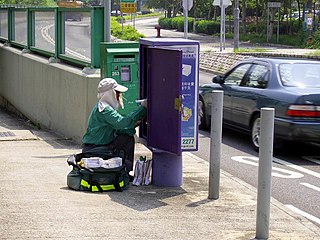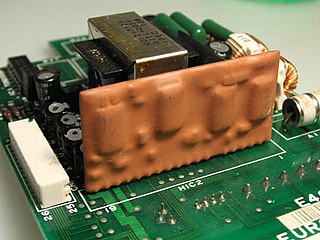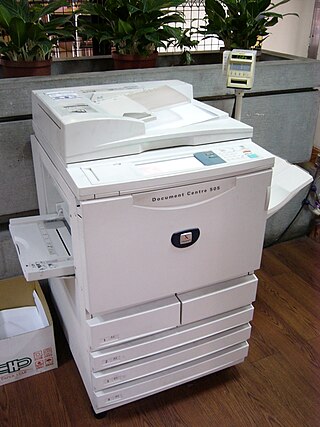| Obsolete technology | Replacement | Still used for |
|---|
| Bathing machine | No longer required due to changing social standards of morality | |
| Hourglass | Clock | Tasks where a fixed amount of time can be measured with a low-tech solution: Exposure time tracker in saunas (where electronics might be damaged by the heat or ultraviolet light); retro kitchen timers, board games, other short-term timers. |
| Manual vacuum cleaner, carpet sweeper | Electric vacuum cleaner | Carpet sweepers are sometimes used in commercial applications (like movie theatres) where the noise of an electric vacuum is unwelcome. |
| Primitive fire making | Ferrocerium, Match, Lighter | Practiced as backup survival skills if advanced methods unavailable. |
| Quill pen, reed pen, dip pen, fountain pen | Ballpoint pen, felt tip pen, brush pen | Calligraphy; ink drawing; personal preference; acting and historical re-enacting. Fountain pens in particular maintain use as fairly standard writing implements, and are in a state of co-existence, rather than of obsolescence, despite reduced usage. |
| Sundial | Clock | Occasionally seen as a decoration in gardens and other outdoor settings. |
| Outhouse | Flush Toilets, Sanitary sewers, Portable toilet, Chemical toilet | Remote or undeveloped locations far from sewage systems. |
| Teleseme | Private branch exchanges with telephones in every hotel room | |
| Swamp cooler | Air conditioning | Dry climates; lower cost alternative in some climates. |
| Water clock, incense clock, candle clock | Clock | |
| Lighting |
|---|
| Incandescent light bulbs | Fluorescent lamps, cold cathode lamps, high-intensity discharge lamp, LEDs | Specialty purposes, especially for holiday decorations; devices where lower voltages and lumens are preferred or required. Mandatory phase-out of incandescent light bulbs is happening in some countries, usually only for general lighting; LEDs are also gradually replacing compact fluorescent lamps. |
| Moonlight towers | Distributed street lighting | |
| Producing light with fire. Early: candles, torches. Later: kerosene lamps, fuel-based lanterns, and gas light | Flashlights, electric lights | Torches sometimes used for performance purposes. Coleman Lanterns and similar are sometimes used for camping, but battery-powered lanterns are becoming more common. Gas lighting is still used for street lighting in some historic districts, but not indoors due to toxic emissions. Candles are still used for aesthetic purposes, both visual and olfactory. Gas and fuel based lanterns as well as candles may also be used to generate light in addition to flashlights during power outages. |
| Kitchens and cooking |
|---|
| Icebox | Refrigerator | Portable cooler boxes are still used for camping and for transportation of perishables. Also used in low-tech communities. |
| Open hearth cooking | Kitchen stoves, ovens, barbecue grills, various small appliances | Frequently done for reasons of flavour (usually specifically ovens); sometimes done during power outages, especially in the absence of gas stoves. Also done in historical recreations and re-enacting. |
| Toasting fork (for use with open flame to make toast) | Toaster, toaster oven | Camping; used in the winter in some houses lacking central heat as a matter of preference. |
| Turnspit dog (Extinct) | Steam power, wind-up power, electrical power | |
| Audiovisual communication |
|---|
| Audio cassette, cassette player, Walkman | Compact disc, MP3, MP3 player | Playing older or archived recordings. |
| Analog television | Digital television | Mandatory digital television transition has been underway around the world since the 2000s. |
| Betamax | Lost a format war to VHS | Playing older or archived recordings. |
| Cathode ray tube | Flatscreen | Retrogaming; some specialty devices. |
| Portable CD player | MP3 player | Personal preference. |
| HD DVD | Lost format war to Blu-ray | Playback of older or archived recordings. |
| Dial-up Internet access | Broadband Internet | Similar technology — CSD is used for M2M communications. Still used by some Internet enthusiasts. |
| LaserDisc | Compact disks, DVDs, and Blu-ray | Playback of older or archived recordings. |
| Overhead projector and slide projector | Video projector | Primarily for continued use of older materials. Some teachers find the overhead projector more convenient for lectures depending on their teaching style. |
| Phonograph and phonograph record | Audio cassette, 8 track tape, CD, digital audio | Used to play older or archived recordings. Additionally, records are preferred by some, especially by audiophiles, for their perceived high fidelity. The focus of vinyl revival. |
| Tin can telephone | Electromagnetic telephone | Continued use as a novelty and for demonstrating acoustic principles. |
| Telegraph | Telephone, teletype, email, Global Maritime Distress and Safety System | Revived as text messaging. |
| Video cassette recorder | DVDs, digital video recorders | Playback of older or archived recordings. |
| Computing, information storage, and office equipment |
|---|
| BlackBerry physical keyboards | smartphones have keyboards displayed on the touchscreen when necessary | Tasks that requires physical keyboards; devices used by the blind, especially those who are also deaf; personal preference. |
| Carbon paper | Photocopier, cheap printing of multiple copies, carbonless copy paper | Still used by some enterprises; in art as a medium or to transfer designs on to certain materials, such as glass or metal; for certain scientific experiments. |
| Car phone | Mobile phone | |
| Credit card imprinters, with carbon paper | Magnetic stripe cards, EMV (chips) | |
| Drafting, manual drawing for creation of blueprints | CAD (Computer Aided Design) | Still used where upgrading to CAD would be too costly or time consuming. |
| Dot-matrix impact printing | Inkjet printer, laser printer | Still used in some enterprises, especially for old carbon paper forms. |
| Faxes | Email, World Wide Web | Still used by some enterprises and sectors. |
| MicroSolutions Backpack line of peripheral devices | Online file storage, Cloud storage | Older PCs, laptops |
| Mimeograph | Photocopier, cheap printing of multiple copies | |
| Landline | Cell phones, VoIP services | Still used remote areas with poor cellphone coverage and by some enterprises and conservative users. |
| Pager | Cell phones | Still used in certain industries, especially in the medical industry. |
| Paper address book, Rolodex | Contact list, electronic address book | Personal address books remain common according to preference. |
| Paper card catalogs, edge-notched cards | Computer databases | Card catalogues still preferred by some libraries, usually when complementary to computer databases. |
| Paper data storage for computers (punch cards, punched tape) | Magnetic data storage | |
| Paper ledger | Computerized spreadsheets and databases | Used as backup and for small scale uses. |
| Paper map, atlas | GPS-aided map software | Used as navigational aids in numerous professions; personal preference; navigating in locales where GPS is unreliable or absent. |
| Personal digital assistant (PDA) | Modern smartphones and tablet computers | |
| Phone book | Search engine and online database | Yellow pages are still distributed for advertising purposes; the general phone book continues to be published and has some continued, albeit greatly reduced, practical function. |
| Printing press | Rotary printing press, computer printing | Still used for high-quality printing, especially reproductions of certain historical texts, such as the Gutenberg Bible. |
| Typewriter | Word processor | Used by some writers as less distracting or otherwise personally conducive to the writing process; personal preference; used by some artists as a medium of creation. |
| Abacus | Mechanical calculator, digital calculator | Still used as an exercise, learning tool, and to assist improving mental arithmetic; personal preference. |
| Slide rule, mechanical calculator | Digital calculator, computer | Still used as an exercise; mechanical calculators sometimes still used for calculations while travelling at high speeds. |
| Vacuum tube | Transistor | Vacuum tubes are still used in microwave ovens, RF communications and radar, high power industrial switching such as in pulsed lasers and generation of x-rays. They have found niche popularity in more expensive guitar amplifiers and hi-fi power amplifiers. |
| Transport |
|---|
| Airships | Airplanes, helicopters; Project Loon replaced by cellular networks and land-based Internet services | Advertising; adventures; research; long-duration surveillance; tourism. |
| Boneshaker, penny-farthing bicycle | Safety bicycle (early version of the modern bicycle) | Historical re-enactment. |
| Buggy whip | Automobiles do not require them | Horse transport: for utility in developing countries and low-tech communities, especially the Amish, and for driving. |
| Carburetor | Fuel injection | Small engine equipment and piston engine aircraft; less frequently used in serviceable antique cars. |
| Celestial navigation with lunar distance method and dead reckoning | Marine chronometer to solve the longitude problem | As an exercise and as backup. |
| Celestial navigation with sextant and marine chronometer | Inertial guidance, radio navigation, radar navigation, satellite navigation | Backup in case of electronic system failure or jamming, spaceflight where satellite and ground-based systems can't be used. |
| Cobblestone | Concrete, asphalt | Still used in some areas, primarily historic districts; driveways. |
| Draft animals for plows, carriages, light rail vehicles, canal boats | Motorized boats, tractors, steam railroads, electric trolleys, cable cars, horseless carriages (automobiles) | Sled dogs in arctic regions, especially of North American and Greenland. Horse-drawn carriages are recreational attractions in some highly developed cities; they continue to be used practically in low-tech communities; historical reenacting. Driving is also done for recreational and athletic ends. |
| Steam locomotive | Diesel locomotive, electric locomotive | Still used for historical heritage railways. |
| Steam tractor, or steam Traction engine | Internal combustion powered Tractor | Maintained by preservation societies and for historical demonstrations; steam turbines. |
| Marine steam engine and steamship | Marine diesel engines, nuclear marine propulsion, aircraft for long-distance passenger travel | |
| Ocean liner | Airliners and jet airliners | Only the RMS Queen Mary 2 is still in service as an ocean liner. |
| Pack animals | Trucks and vans | In developed countries, only in difficult terrain with no roads (e.g. Grand Canyon) or for tourist purposes; generally used in less developed areas and in low-tech communities. |
| Roman concrete | Reinforced concrete | Used for restoration of older structures; also used in combination with modern concretes to create more durable concretes. |
|
| Military |
|---|
| Early siege engines (siege towers, battering rams, catapults, ballistae, trebuchets) | Artillery, aircraft | Historical reenactments. |
| Forts, defensive walls, castles | Vulnerable to air attack, useless to prevent the advance of aircraft | Limited use of underground bunkers and civilian air raid shelters; some limited use as fortifications, depending on the military situation at hand. |
| Gunpowder | Smokeless powder, high explosives, dynamite, ANFO | Recreational shooting; historical reenactments. Also continues to be used outside of its military and industrial applications, most notably in fireworks. |
| Muzzleloader firearms | Breech-loading weapons | Historical reenactments. |
| Spears and other polearms | Firearms | Bayonets, spear fishing; used for some sports and in historical reenactments; part of some uniforms, such as the Swiss Guard. |
| Sword | Firearms | Issued for ceremonial purposes to NCOs and upwards; used for some sports and in historical reenactments; part of some uniforms, especially diplomatic ones. |
| Bow and arrow | Firearms | Used for some sports and in historical reenactments. |
| Medicine |
|---|
| Anatomical Machines | Modern anatomical models | |
| Iron lung | Ventilator | Cheap substitutes in case of shortages during an outbreak or pandemic. |
| Art |
|---|
| Han purple and Han blue | Other pigments, synthetic dyes | Restoration; some limited use among artists. |









